Keeping you informed
Newsletter Easter 2024
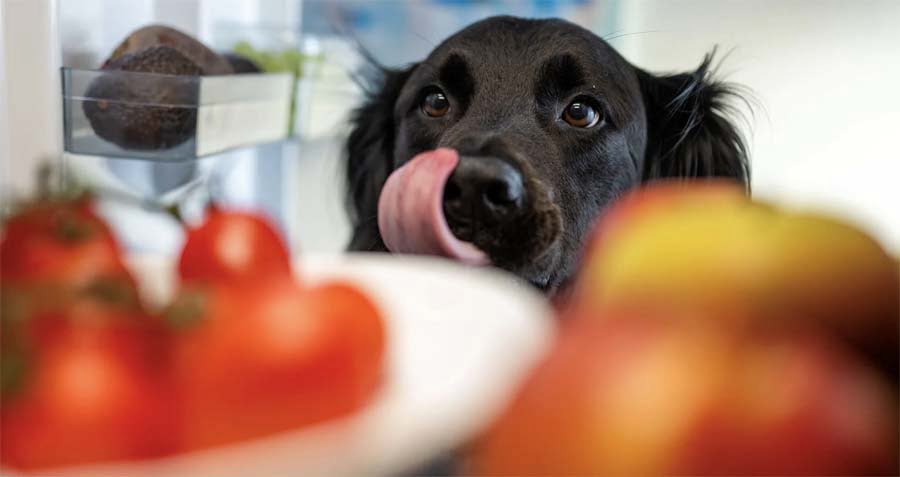
Chocolate Toxicity Calculator
Many pet owners are already aware of the dangers of chocolate ingestion in their pets, but how much chocolate is actually toxic?
Did you know that our website has a chocolate toxicity calculator?
As the Easter weekend approaches, hundreds of pet owners visit our website to determine whether their pet has eaten a dangerous amount of chocolate. As toxicity in chocolate depends on many factors such as pet size and type of chocolate (dark versus milk), it is important to accurately calculate whether vomiting needs to be induced or not.
Remember, dark chocolate has higher levels of toxic theobromine present, so is more dangerous to dogs than milk chocolate.
There is only a short window of opportunity to induce vomiting in dogs who have ingested chocolate (between 1-3 hours), so if you are uncertain, it is safest to come in for a consultation and have our veterinary team induce vomiting if required and assess vital signs to see if your pet is in any danger. Cats tend to leave chocolate alone, so it is not common for cats to present with chocolate toxicity, but never say never! Keeping chocolate out of reach for your pets is a much better option than waiting until it’s too late.
Chocolate ingestion in toxic amounts can cause:
- Gastrointestinal signs – vomiting and diarrhoea
- Tachycardia – elevated heart rate
- Tremors
- Seizures
- Death
Check out our chocolate toxicity calculator for further information.
Is your Pet Protected from Deadly Paralysis Ticks?
Author: Dr James Thompson – Senior Veterinarian
Australian paralysis ticks are far more toxic than ticks in the UK, South Africa or the United States. It is vital that dogs and cats are treated with appropriate preventatives to safeguard them, particularly during the warmer summer months. Remember, when it comes to parasites, prevention is the best medicine!
Knowing the early signs of tick toxicity could save your pet’s life!
Signs of tick toxicity can be any of the following:
- Vomiting or retching (mainly dogs)
- Change in the sound of your dog’s bark or your cat’s meow (vocal cord paralysis)
- Uncoordinated back legs, difficulty jumping or wobbly gait progressing to paralysis of all limbs
- Difficulty breathing progressing to respiratory failure and death
Signs of tick toxicity usually occur within 3 days of tick attachment. One tick can kill a pet in just days, so even if your pet is showing the slightest signs of tick toxicity, they will need to be treated with the tick anti-serum urgently.
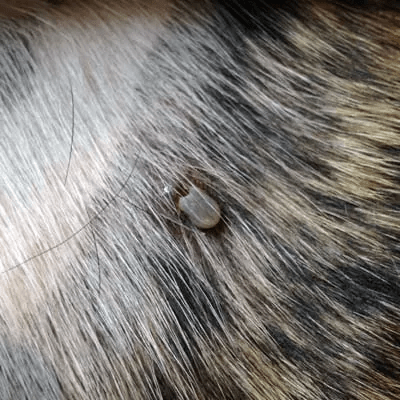 A deadly paralysis tick attached to a dog’s skin
A deadly paralysis tick attached to a dog’s skin
If you find a tick on your pet, or notice any of the above signs, contact us urgently to organise a veterinary consultation as soon as possible.
A Time to Celebrate
Happy Lunar New Year!

February marked the Lunar New Year, which is a festival celebrated by many Asian cultures. It marks the beginning of the new year and the arrival of Spring based on the lunar, or lunisolar, calendar. Traditionally, it is a way to honour ancestors, and a time to visit relatives, spend time with friends, and exchange gifts. 2024 is the Year of the Dragon!
To all our clients who celebrate this diverse tradition, Happy Lunar New Year!
Happy Naw-Ruz/Nowruz to our Bahá’í and Persian communities!

March marked Naw-Ruz/Nowruz which translates to New Day and is the first day of the Bahá’í calendar year and has been celebrated since ancient times in Iran. It is a time for celebration of a ‘spiritual springtime’ that symbolises both individual renewal and mankind’s revitalisation.
Welcome Nurse Phoebe!

We are excited to welcome Phoebe into our Nursing Team!
Phoebe grew up in Ascott, England, and has previous extensive experience working in general practice in the UK. Growing up, Phoebe owned dogs, frogs and everything in between! She has an interest in pet nutrition and healthy weight management and looks forward to enhancing her skills while working with the team at Turramurra Veterinary Hospital.
We look forward to continue working with you Phoebe!
Opportunistic Scavenging in Dogs
Author: Katie Bedrossian – Pet Behaviour Consultant
Did you know that the way our dogs eat is labelled as ‘opportunistic scavenging’?
This means that they take any opportunity to scavenge for food and enjoy the search as much as the food!
If you are the guardian of a dog who searches kitchen benches and dining tables for tiny morsels of food, hangs at your feet while you cook, climbs into the dishwasher or has worked out how to get into your rubbish bins, you probably already know your dog as a scavenger.
If your dog is not typically a scavenger, it is important to be aware that some medications, such as prednisolone, can increase hunger which can cause scavenging behaviour to start or escalate.
With Easter coming up, we need to be even more vigilant about our opportunistic scavengers. We certainly want to avoid them consuming chocolate in our Easter treats and sultanas in our Hot Cross Buns, as well as other items that are potentially dangerous if consumed by dogs.
How can we prevent access to these items?
- Keep any food preparation and consumption areas clear of food when not in use, particularly when you are not around.
- Whenever these areas are not in use, ensure your dog can’t reach the food. Barriers are one way to do it, using either a pen to keep your dog in or gates and barriers to keep your dog out. Tethering (securing your dog on lead to something solid out of reach of the food areas) works well for small dogs. Larger dogs may need to be in another room or outside.
- When separating your dog from food areas, pre-emptively prepare either their meal food or a special high value treat in a food dispensing toy, such as snuffle mats, Kongs, Lickimats or puzzle toys. Give this item at the same time as separating them so there is a positive association. You could also give an edible chew if your dog prefers, such as dental chews, bully sticks or beef jerky.
Read more tips to prevent your dog opportunistically scavenging.
Pet of the Month: Boris Stewart
Author: Freya Britt-Lewis – Customer Care & Pet Health Writer
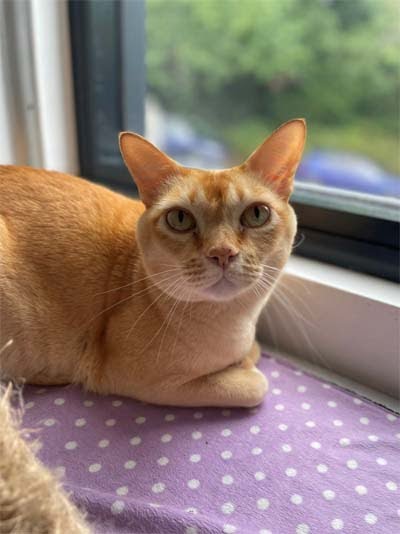
Boris the Burmese has stayed with us many times in our Turramurra Cat Hotel, (our boutique cat boarding room) most recently earlier this year. Boris is one of our favourite ‘customers’ and is particularly fond of anyone who stops to offer him cuddles and chin rubs.
Boris enjoys spending time sunning on the windowsill of his luxury suite and has a larger than life personality with lots of confidence. We had to award him our Pet of the Month award for February because of the joy he brings to our team when he stays with us!
Turramurra Veterinary Hospital offers a variety of boarding options for our feline patients.
Contact our friendly customer care team on 9988 0198 or click on cat boarding for further information and to book your kitty in for their stay online.
Q&A: Dr Allie Siniawski – Veterinarian
 What inspired you to become a veterinarian?
What inspired you to become a veterinarian?
I’ve always loved animals and knew I wanted to work in science. Being a veterinarian is a wonderful experience. Getting to help both people and animals, and to be able to see that strong human-animal bond every day, is a privilege. It’s also a dynamic job, which involves thinking on my feet and problem solving, which I enjoy.
Do you have a particular interest in any veterinary field?
I’m a Fear Free certified veterinarian and am passionate about providing a stress-free visit for animals. I also have an interest in managing anxiety (particularly in dogs), geriatric patient care and soft tissue surgery.
What aspect of working at Turramurra Veterinary Hospital do you enjoy the most?
The wonderful group of people I get to work with every day! The team has been very welcoming and I have learned so much from them already.
Tell us a little bit about your current pets!
My 5 five year old Shih tzu Mochi is the light of my life. She is very playful and loving, and enjoys being outside where she can sniff, chase lizards, bark at birds, and relax on the top step of the pool to cool off on hot days (she wouldn’t dare to actually go for a swim though…). Mochi is an anxious girl and gets her daily anti-anxiety tablet in a teaspoon of cream cheese. She is very spoiled!
I also count my partner’s dogs as my own! Nine year old Ellie is the most dignified little lady you’ll ever meet, and two year old Muppet (who very much lives up to her name) is such a silly goose. Both are poodle mixes.
Simple Steps To Enrich Your Rabbit’s Life
Author: Freya Britt-Lewis – Customer Care & Pet Health Writer

Rabbits are active, inquisitive and highly social animals that make fantastic family pets. According to the Animal Medicine Australia’s ‘Pets in Australia: A national survey of pets and people’ around 4% of Australian homes own small mammals, or ‘pocket pets’. Out of these households, rabbits are the most popular choice!
The welfare of your rabbit relies on a variety of different things including housing, toys, socialisation and appropriate handling. When considering rabbit welfare in the home environment, it is important to acknowledge that they are a prey animal. For this reason, your rabbit will respond differently to being handled than your dog. Most rabbits do not really enjoy being picked up as they instinctively associate it with being caught by a predator.
Encourage your rabbit to exhibit their natural behaviours, such as:
- Foraging and digging
- Roaming, running and jumping
- Climbing
- Socialising
Housing
Your rabbit should have access to a hutch with areas to rest and hide. Ideally, the cage should have multiple levels with stairs or a ramp to encourage climbing. They should also have an area
that allows them to roam safely. You can do this by building a pen around your rabbits hutch and opening the door. This will encourage your rabbit to explore, forage and exercise.
Read more ways to enrich your rabbit’s life.
Innovations: Felpreva Spot-On For Cats
Author: Dr Amy Howe and Dr Gretta Howard – Veterinarians
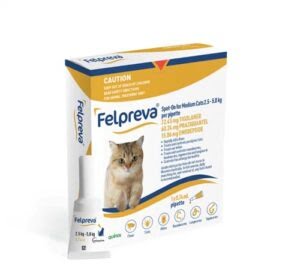 Regular preventative care for our pets forms the cornerstone of keeping them happy and healthy in between vet visits. Prevention against deadly paralysis ticks, fleas, worms and mites form the foundation of regular treatments at home and has traditionally required a combination of products to achieve this.
Regular preventative care for our pets forms the cornerstone of keeping them happy and healthy in between vet visits. Prevention against deadly paralysis ticks, fleas, worms and mites form the foundation of regular treatments at home and has traditionally required a combination of products to achieve this.
However, good news for our feline companions has recently arrived, with the launch of Felpreva spot-on for cats. This is a quarterly (3-monthly) all-in-one treatment, applied to the skin at the back of the neck. It is safe for use in kittens from 10 weeks of age, and once they are over 1kg. Now there is no need for additional worming tablets alongside it, which will save a lot of stress (and fingers) at home!
Combining effective parasiticides tigolaner, emodepside and praziquantel, a single dose of Felpreva spot-on for cats protects against the following parasites for 3 months and should be used all year round (4 times per year):
- Paralysis ticks
- Fleas
- Hookworms
- Roundworms
- Tapeworms
- Lungworms
- Mites
As paralysis ticks are a particular issue in our local area, it is still important to note that no product can completely guarantee your pet will remain tick-free. For outdoor cats, the addition of a Seresto tick collar replaced every 4 months is recommended to repel ticks in combination with Felpreva, as well as well as performing a daily tick search, particularly during spring and summer. If ticks are found, they should be removed at home immediately or booked in urgently for a consultation with one of our friendly vets for tick removal and to ensure there are no early signs of tick toxicity.
Unfortunately, many of the previously launched combination products do not have coverage against tapeworms, so an additional worming tablet for these is required every 3 months.
Turramurra Veterinary Hospital will be stocking Felpreva Spot-On for Cats so have a chat with us about whether this product will be right for you and your feline friend.
Ask The Vet!
Author: Dr Allie Siniawski
1.My dog’s poo is not always solid. Is this a diet issue or could there be another problem causing this?
Soft faeces can be the result of many things. Diet may play a part, as sudden changes in what you’re feeding can upset the stomach. Some dogs may have a food intolerance which presents with gastrointestinal signs such as diarrhoea. Intermittent soft stools can also be the result of internal parasites, dietary indiscretions (such as eating possum poo in the backyard!), bacterial or viral infections, inflammatory bowel disorders, or even indicate an underlying endocrine disease. If your dog has soft stools, it is always worthwhile booking a veterinary consult for further investigation.
2.My cat sheds a lot of hair! How can I stop this?
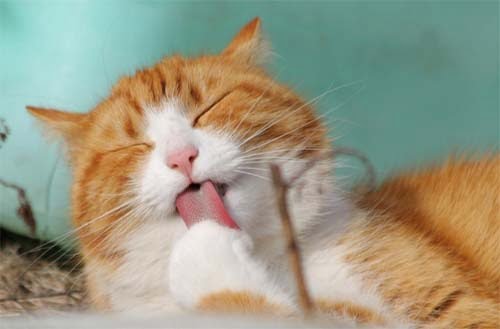
Cats will shed hair naturally. To reduce the amount, we recommend regular brushing several times per week, or daily for long haired cats if possible.
Make this a positive experience for your cat with lots of treats and cuddles! If your cat is developing a thin haircoat, bald patches or appears to be excessively grooming, then a veterinary consultation is worthwhile to further investigate the cause.
3.My dog gets anxious during thunderstorms, how can I help him?

Anxiety during thunderstorms is common in dogs. Creating a safe space for them to go, such as a crate, can increase their sense of security, with the addition of calming pheromones such as Adaptil.
If amenable, it’s always helpful to do things your dog enjoys during a thunderstorm (e.g. playing fetch) so they can have a positive association with the sounds of thunderstorms. If needed, booking a veterinary behaviour consult to discuss short-term anti-anxiety medications for use during storms may also be worthwhile.
We would like to wish all our valued clients a happy and safe Easter break.
We hope you have enjoyed our e-news and would love to hear from you! We are always keen to receive feedback from our clients, so feel free to send a message by emailing manager@turramurravet.com.au as we always strive to improve our service.
Best wishes, from your local, family-owned and independent Turramurra Veterinary Hospital team.

